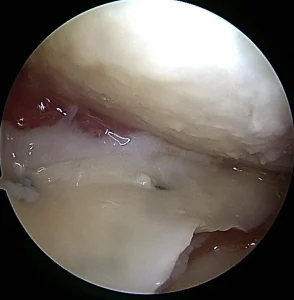In some cases, it certainly works!
It is not uncommon to find axial deviations in the knee area in patients (more often in the form of the letter “O”, less frequently in the form of the letter “X”). If we align the limb axis in good time in these cases, we can either prevent the implantation of a total endoprosthesis altogether or at least delay it by many years.
Post-traumatic conditions involving damage to ligaments, menisci, or joint surfaces (cartilage or even bone) often lead to wear and tear of the knee. Timely reconstruction is important not only for cruciate ligaments but also for collateral ligaments. The missing meniscus is a significant handicap for the knee joint and the only way to prevent the development of osteoarthritis is a meniscus transplant. Reconstruction of the articular surface is also of fundamental importance for the future condition of the knee. We perform various types of cartilage reconstruction or transplant bone tissue for deeper defects.
If part of the knee joint is already worn out, the only option is often to implant the corresponding partial endoprosthesis while preserving the remaining parts of the joint. In addition to partial endoprosthesis of the inner side of the knee joint, we also implant partial endoprosthesis of the outer side and partial endoprosthesis of the front part of the knee joint (under the kneecap). Partial knee arthroplasty, unlike total knee arthroplasty, preserves the biomechanics of the knee joint and is a much smaller surgical procedure.
